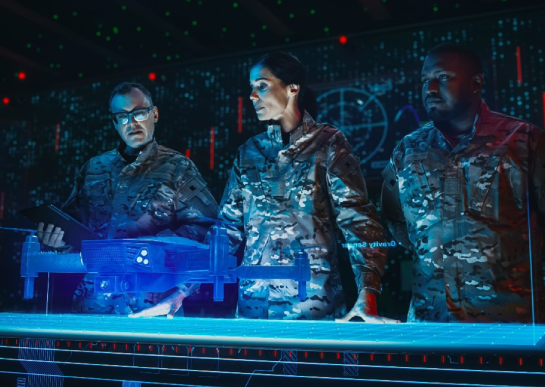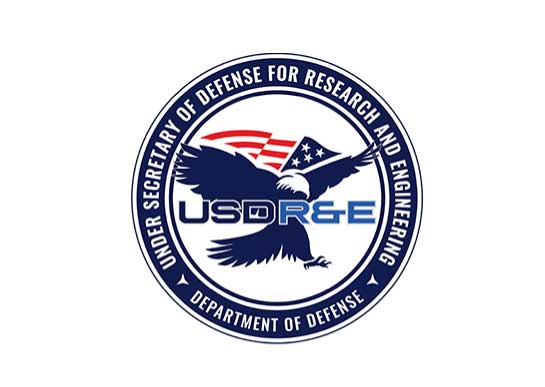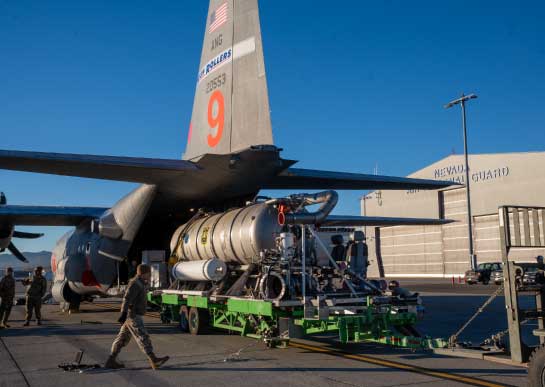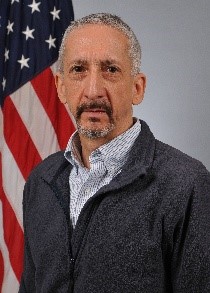Defense S&T Spotlight
January 2025
Defense S&T Spotlight compiles news and updates relevant to DoD and the research and engineering (R&E) community and highlights DTIC resources that will empower you to better analyze, shape, and share your science and technology efforts.
Spotlight Areas
- R&E In The News
- DTIC Products & Services
- DoDIAC
- Quarterly Features
- News Center
- Defense S&T Spotlight - October 2024
Remember, credentials control the type of information accessible to users.
DTIC continues to innovate offering depth and breadth to the knowledge we provide our stakeholders. We ensure the innovation and knowledge stemming from DoD's past and current investment in science and technology forms the building blocks for the next generation of discovery and accelerates capability to the warfighter.
R&E In The News
Over 1,800 soldiers and airmen from California’s Army National Guard and Air National Guard, and military units from around the country, assisted in combating the devastating wildfires in Los Angeles County. In support, the Department of Defense (DoD) deployed modified C-130 aircraft equipped with Modular Airborne Fire Fighting Systems (MAFFS), as well as Navy helicopters furnished with Bambi Buckets, to drop thousands of gallons of water or fire retardant. Developed in the 1970s in response to a major blaze in Los Angeles County, MAFFS’ early suitability and effectiveness testing results can be found in DTIC’s collection.
The DoD continues to invest in identifying the most effective tools and methods for suppressing fires. In addition to studying the probability of wildfires in Los Angeles County, the DoD has funded testing Bambi Buckets installed on UH-60 Black Hawk helicopters, researching safer next-generation fire-fighting foams that are fluorine-free and utilizing drones to perform aerial firefighting or rescue missions. The DoD’s investment in cutting-edge firefighting technology and research strengthens the federal response to fighting and preventing wildfires.
Discover highlighted technical reports in DTIC's collection covering wildfires and firefighting tactics in DTIC’s collection:
- A Spatial-Temporal Point Process Model for Estimating Probability of Wildfires in Los Angeles County - AD1173498
- IOT and E of the Modular Airborne Fire Fighting System - AD0909475
- Temperature/Altitude/Humidity Test of the Bambi Bucket to be Installed on the UH-60 Helicopters - ADB377527
- Fluorine-Free Foam (F3) Application Techniques and Firefighting Tactics - AD1201646
- Hollow Microspheres Based Fire Fighting Foams- AD1217159
- The Next Generation of Wildland Firefighting Tools: Using UAV Swarms for Fire Attack - AD1173335
- Unmanned Aerial Firefighting and Rescue Vehicle - AD1131893
Explore more relevant reports here.
News Sources:
- Military Already Fighting Fires in California, Ready to Do More (DoD Press Release)
- National Guard Fights California Wildfires, Additional Assets Remain on Standby (DoD Press Release)
- See the US military's special C-130 Hercules water bombers that are joining the LA wildfire fight (Business Insider)

The Department of Defense's Replicator initiative aims to develop and deploy low-cost, expendable, autonomous systems to maintain a competitive edge against global adversaries.
The program, led by the Defense Innovation Unit (DIU), focuses on platforms such as drones and unmanned vehicles. Replicator 1 aims to field autonomous systems across multiple domains within 18 to 24 months, with Anduril and AeroVironment already involved.
Replicator 2, announced by former Defense Secretary Lloyd Austin, will focus on countering small unmanned aerial systems. The program received $500 million in funding for FY 24 and requested the same amount for FY 25. DIU is working with additional vendors to provide command and control support for Replicator.
Discover highlighted technical reports in DTIC's collection covering drones in DTIC’s collection:
- Getting Out of Our Own Way: Understanding History and Emergent Capabilities to Inform Joint Force Design for Intelligent Robotics and Autonomous Systems - AD1227851
- Integrating Unmanned Aerial Vehicles into Surveillance Systems in Complex Maritime Environments - ADA589494
- How Can Naval Special Warfare Best Leverage Small Unmanned Surface Vessels for Future Conflict? - AD1223988
Explore more relevant reports here.
Source: GovConWire

The Pentagon's Defense Advanced Research Projects Agency (DARPA) is planning to launch a new program called Robust Quantum Sensors (RoQS) to develop more durable quantum sensors for U.S. military platforms.
These sensors are seen as important for positioning, navigation, timing, and intelligence purposes. The program aims to address challenges in deploying quantum sensors and transition them to military platforms for real-world applications.
Quantum technology has the potential to revolutionize military capabilities, with sensing considered the most mature application. Quantum sensors could enhance detection of enemy submarines, underground structures, nuclear materials, and electromagnetic emissions.
While costly, these technologies are being integrated into strategic military assets with the aim of eventually expanding into civilian applications.
Discover highlighted technical reports in DTIC's collection covering quantum sensors in DTIC’s collection:
- Rydberg Atom Electric Field Sensors for Next-Generation Communications and Sensing - AD1208531
- A Perspective on Quantum Sensors from Basic Research to Commercial Applications (Postprint) - AD1228484
- Quantum Sensors at Honeywell - AD1166048
Explore more relevant reports here.
Source: DefenseScoop

With President Donald Trump sworn in to office Jan. 20, he has nominated key science and technology roles in his administration.
Trump has selected former Uber executive, Emil Michael, as his nominee for Under Secretary of Defense for Research and Engineering USD(R&E). This role oversees the research, development, and prototyping activities across the Department of Defense. DTIC reports to USD(R&E).
Michael, in addition to being Uber’s chief business officer from 2013 to 2017, served as an assistant to Defense Secretary Robert Gates and was a member of the Defense Business Board during the Obama administration. Along with Michael, Trump also named his picks for the deputy secretary of defense and undersecretaries for the acquisition and sustainment and policy directorates.
Trump announced he would nominate Michael Kratsios to be Director of the White House Office of Science and Technology Policy (OSTP). Kratsios, who for the last 3 years has been managing director of Scale AI, previously served as chief technology officer during the first Trump administration as well as the Acting Under Secretary of Defense for Research and Engineering briefly from July 2020 to January 2021.
Sources: DefenseScoop, Politico, Science

The Defense Innovation Board (DIB) recently released two studies on Scaling Nontraditional Defense Innovation and A Pathway to Scaling Unmanned Weapons Systems. During its winter meeting, Deputy Secretary Hicks emphasized the importance of innovation in the Department of Defense (DoD) and highlighted the progress made in the past four years.
The DIB called for faster action to address defense procurement challenges and urged the elimination of unnecessary bureaucracy to ensure U.S. technological leadership.
The Board emphasized the importance of working with industry, academia, and allies to promote innovation in the DoD.
Discover highlighted technical reports in DTIC's collection covering future of warfare and drones in DTIC’s collection:
- Characterizing the Uncrewed Systems Industrial Base - AD1199984
- The Future of Warfare - AD1316170
- FY22 Multi Domain Armaments for Small Unmanned Systems - AD1183456
Explore more relevant reports here.
Source: U.S. Department of Defense
DTIC Products & Services

Use your DoD-issued CAC, PIV, or ECA to access DTIC’s R&E Gateway and its extensive collection of controlled-unclassified DoD technical reports and research projects.
Need help signing in or registering? Email DTIC or call 800-225-3842.
Discover DTIC's upgraded SIPRNet Research and Engineering (R&E) Gateway Search, providing seamless access to over 4 million DoD scientific and technical reports classified up to the SECRET//NOFORN level.
DTIC on SIPRNet hosts a wealth of classified information on various technology topics for in-depth research. Explore the platform to discover a treasure trove of classified, comprehensive, and detailed information across a wide range of resources and tools, including the classified capability needs of each Command's Integrated Priority List (IPL) and Classified DoD Security Classification Guides (SCGs) to enhance your research (DoD Only), and so much more.
Equipped with similar features to the NIPRNet Search, the SIPRNet Search on DTIC offers user-friendly search options, filters, saved search capabilities, and improved visibility for discovery tools, notifications, and feedback.
To obtain the SIPRNet URL, visit the DTIC's R&E Gateway homepage and locate it through the menu drop-down.
To access DTIC's secure websites, DoD Common Access Card (CAC), Personal Identity Verification (PIV), or External Certification Authority (ECA) are required.
If you're new to DTIC's SIPRNet resources, take a moment to visit the DTIC Training page on SIPRNet after logging in to acquaint yourself with the enhanced features and functionalities of the SIPRNet DTIC Search.
DTIC’s Horizons application recently began a phased update to its Innovators Information Repository (IIR) data. Now users have a more streamlined way to explore the IIR data sourced by the U.S. Small Business Innovation Research (SBIR) and Small Business Technology Transfer (STTR) programs.
Updates include:
- Direct Access: By using the dedicated "Innovators Information Repository" link from the Horizons menu, users are provided a pre-filtered view of all Small Business research as reported to DTIC and the DoD by the services.
- Search Small Businesses narrowly by Collection: Users can still filter on just the IIR collection by checking IIR in the “Collection Categories” menu.
- Search Small Businesses by Theme: The new IIR Horizons’ “hamburger” menu choice prefilters across all DTIC collections with a themed focus on Small Business activities. From here users can narrow their technology query using the search field or the advanced filter drop down menus.
The updates to IIR provide users the ability to access DTIC’s expansive SBIR/STTR information more quickly and conveniently.
DTIC has close to 5 million technical reports and other scientific and technological information in its collection of DoD funded research. Here’s a sampling:
Camp Century – Rediscovered
Earlier this year, during a NASA geological research mission, a photo was captured showing a mysterious cluster of turquoise dots on an ice sheet in Greenland. It was revealed the cluster is an abandoned Arctic U.S. military scientific research base, Camp Century. Built by the U.S. Army Corps of Engineers in 1959, Camp Century is now buried deep under snow and ice. This research site is where U.S. scientists collected the world’s first ice core samples (AD0696412). However, the base was also home to Project Iceworm, an effort to house and launch a system of missiles within tunnels beneath the ice. The site was abandoned in 1966. DTIC’s collection contains many of the research studies published while the base was in operation. In 1969, shortly after the base was abandoned, pictures were taken of the site and those pictures were captured in a report (AD0711862).
News Story Source: Popular Mechanics
Rations in cold weather
Cold climates require the body to use more energy to stay warm. Intense combat operations mean soldiers can burn up to 6,000 calories a day, about twice as much as they typically eat. To gain a better understanding of nutrition requirements during cold-weather military operations, the DoD has invested in innovative techniques and research on rations that will fill nutrition requirements for soldiers operating in cold-weather environments. DTIC has reports spanning 1942 - 2020, with topics such as studying how well insulated thermos jugs retain heat, testing the suitability of rations in arctic winter conditions in the 1960s, to evaluating the impact of cold weather operations on water intake.
News Story Source: U.S. Army
Military Working Dogs
In November 2024, military officials broke ground on a new veterinary facility that will serve as a major medical hub for military medical dogs and federal law enforcement K-9 teams. The new site, at Fort Belvoir, will replace a 30-year-old facility and serve as the primary medical facility for over 60 military working dogs stationed across the National Capital Region. Currently, dogs needing advanced care must be moved to a veterinary center in San Antonio, Texas. This new facility will change this. Beyond clinical care, the facility will serve as the headquarters for veterinary public health operations across the eastern United States. Just as DTIC houses cutting-edge research on keeping the warfighter safe and healthy, DTIC’s collection includes a wide variety of studies conducted over the years with the primary aim to keep military working dogs safe and healthy.
News Story Source: US Army Corps of Engineers Baltimore District Website
Interested in more like these? Check out DTIC’s collection. If you are not a registered user, please visit DTIC’s registration page to find out more about becoming part of the DTIC community.
DoDIAC
The DoD Information Analysis Center (DoDIAC) is a key resource providing a wide range of services and capabilities to help the warfighter meet the challenges of a rapidly changing world. As one of its services, the DoDIAC offers up to 4 free hours of research and analysis answering Technical Inquiries (TI) using worldwide information resources and an extensive network of subject matter experts.
Through answering TIs, the DoDIAC provides expert advice, access to specialized research, and practical technical assistance to help researchers and analysts tackle complex challenges within 22 technical focus areas across three information analysis centers: Cybersecurity & Information Systems (CSIAC), Defense Systems (DSIAC), and Homeland Defense & Security (HDIAC).
Two of the most appreciated benefits of the TI service are it saves researchers time and streamlines access to high-quality information. Searching for reliable data or the latest technical insights can be time-consuming and requires access to specialized databases, repositories, and experts in the field. By providing targeted responses using curated resources, the DoDIAC allows researchers to focus on their work instead of spending hours searching for information.
In addition to saving time, TI services promote collaboration across disciplines. By sharing knowledge, connecting experts, and responding to diverse technical inquiries, the DoDIAC encourages innovation and fosters progress across domains. Whether by answering questions or pointing researchers to additional resources, the DoDIAC ensures that valuable knowledge is accessible and applicable, helping the scientific community address pressing challenges and drive innovation.
Technical inquiries and literature searches are available to members of the military, government civilians, and contractors on a government or military contract. Submit your TI at one of our IACs at:
Quarterly Features
In December 2024, the White House Office of Science and Technology Policy (OSTP) approved the Department of Defense (DoD) Public Access Plan. The plan outlines how DoD will implement objectives the office outlined in 2022 to provide free, immediate, and equitable access to peer-reviewed scholarly publications resulting from DoD-funded research.
This DoD Public Access Plan describes how DoD will make those documents publicly available at the time of release without embargo or delay. DoD will also ensure that the publications are in machine-readable formats and accessible through assistive devices.
DoD will establish policies for both intramural and extramural research programs, revise relevant regulations, and adopt a systematic approach to managing the scientific data that underlie publications and datasets. To maintain scientific and research integrity, DoD will include metadata for publications and datasets and digital persistent identifiers.
Deadlines have been set for implementing these policies to achieve free access to federally funded research by Dec. 31, 2027.
DTIC is celebrating 80 years as DoD's STI knowledge center
In the 1960s computer technologies began to expand but were still extremely limited due to their size and lack of computing power. Bibliographic searches for users took anywhere between six and 30 days to obtain even using the computer power of the time.
A request was either called or mailed in to the Defense Documentation Center (DDC), DTIC’s name during the late 1960s, and a retrieval analyst would review the request and develop a search strategy.
But in 1974 that cumbersome and time-consuming process would become obsolete with the introduction of the DROLS system.
The DDC Remote Online Retrieval System which would turn into the Defense RDT&E Online System (DROLS) launched in 1974. It would finally give users direct online access to the DDC databases to run their own searches in real time.
As the 1970s progressed so did the technology that made it easier to store and access information.
In the decade from the mid-1970s through the 1980s a major shift occurred in how people were able to access information due to technological advances in computing.
During this time the needs and expectations of those using the DDC products and resources expanded to much more than just documents. They needed specific, relevant, and timely information of various types of reports and documents from a growing number of resources, including foreign and intelligence derived. Thus, in October 1979 the DDC changed its name to the Defense Technical Information Center (DTIC) in recognition of its changing objectives.
By the end of the 1980s into the early 1990s the information age was not just over the horizon anymore, it had arrived. In the early years of DTIC the growth of scholarly information was measured by the amount of documents in the library collections, which were doubling roughly every 16 years. By the early 1990s analysts were no longer measuring growth by the number of documents but by the information itself, which was estimated to double at a staggering rate of every 18 to 20 months. The very fact that analysts were no longer measuring growth by the amount of documents but instead by the amount of data indicated a seismic shift in information technology. The biggest issue was not merely growth in the amount of material but a revolution in how that information was found, disseminated, and used.
During this time of great technological transition DTIC was transferred from the Defense Logistics Agency (DLA) to the OSD. DTIC would now assume a broader and more important role within the Department of Defense (DoD). With the move to the OSD, DTIC would now have the ability for the first time to work directly with high-level decision-makers within the Pentagon.
DTIC created its first homepage online which was a starting point for users searching for DoD information. DefenseLINK was developed by DTIC and partners that provided users with a single-entry point to link home pages that offered information about OSD organization, Defense agencies, and military services. It also acted as a news resource that included OSD PAO press releases, transcripts of DoD news and background briefings, contract award announcements, press advisories, and other information. In 1995 one of the most significant new systems introduced by DTIC was launched, the Electronic Document Management System (EDMS).
The EDMS would ultimately eliminate the manual handling of paper documents during processing because the entire report was scanned upon arrival.
Closing out the 20th century DTIC looked forward to a new millennium and continued advancements in technology.
The Department of Defense (DoD) announced the latest cohort of Laboratory-University Collaboration Initiative (LUCI) fellows this past month. The 20 new LUCI fellows from defense laboratories will work on research projects that are eligible to receive up to $200,000 for three years.
To foster collaboration, LUCI fellows are required to partner with DoD-funded academic researchers who are either recipients of the Vannevar Bush Faculty Fellowship or are principal/co-principal investigators under the Multi-Disciplinary University Research Initiative. The LUCI program, administered out of the Basic Research Office, focuses on priority defense research areas including applied mathematics, artificial intelligence, cognitive neuroscience, engineering biology, novel materials, quantum information science, and manufacturing science.
See current and past LUCI fellows and their publications available in DTIC’s collection here.
Dr. Jay Albert
Air Force Research Laboratory
From 1989 to 2004 Dr. Jay Albert worked as an on-site contractor for the Battlespace Environment Division of the Space Vehicles Directorate, Air Force Research Laboratory (AFRL/RVB) at Hanscom Air Force Base. During that time, he published 22 journal articles. Dr. Albert began his federal employment in 2004 as a Senior Research Physicist in the AFRL/RVB, Hanscom Air Force Base. As an AFRL government employee, he has published 85 articles (83 journal articles [24 lead], two book chapters [one lead]), 208 conference papers/proceedings (100 1st author including 19 invited), and 17 technical reports [eight lead]). The impact of his research to the S&T community has been substantial as his work has been cited over 5,300 times (h-index of 41) with 25 landmark publications (>100 citations).
Looking for additional tools to conduct a search in DTIC Search?
Navigate to the R&E Gateway
Click on “Search Tips” located under the Search bar

DTIC offers an online User Guide that provides an in-depth search instruction that covers:
- Mnemonic Fields
- Date Aliases
- Search Operators
- Basic Boolean Operators
- Grouping
- Wildcard Search
- Range Search
- Fuzzy Search
- Proximity Search
- Boosting
- Combining Multiple Features
- Working with the various filters
To learn more on DTIC Training
News Center

JDR&E
Explore the latest special edition of the Journal of DoD Research and Engineering (JDR&E), which focuses on the Joint Hypersonics Transition Office. A SIPR version of this special edition is also available. This issue, Volume 7, Issue 4, highlights the work of the DoD's Joint Hypersonics Transition Office. The NIPR version features 17 controlled unclassified articles, while the SIPR issue contains five classified articles.
If you haven't seen our previous issues, they are available in the JDR&E archives.
The JDR&E team is actively seeking to expand its pool of peer reviewers and encourage NIPR/SIPR article submissions across all 19 Communities of Interest to foster ongoing collaboration within the DoD R&E communities. For more information on how to apply to be a peer reviewer or to submit an article, please visit the JDRE site.
Access your copy of the NIPR version of JDR&E. To become a JDR&E peer reviewer, apply to the Journal of DoD Research and Engineering.

R&E Newsletters
- S&T Global Highlights, Office of the Strategic Intelligence & Analysis
- CSIAC Digest
- DSIAC Digest
- HDIAC Digest
*Only Distribution A newsletters are shown in this list.
Disclaimers
Featured news articles highlight technology, research, and developments of interest to the S&T and RDT&E communities. Articles may have been abbreviated, synopsized, or excerpted; the full articles can be found by using the links provided within or at the bottom of each article. The views expressed in this online newsletter are those of the originating authors and do not reflect the official policy, position or opinion(s) of the Defense Technical Information Center (DTIC), Department of Defense (DoD), or the United States Government.
DTIC does not endorse any specific technologies, products, or services featured in or highlighted by any of the articles in this online newsletter. The appearance of external hyperlinks does not constitute endorsement by DTIC, the DoD, or the United States Government of the linked websites, or the information, products or services contained therein and neither DTIC, the DoD, nor the United States Government exercises any editorial control over the information you may find at these locations.
All provided links are consistent with the mission of this website.
Please let us know about any existing external links that you believe are inappropriate.













